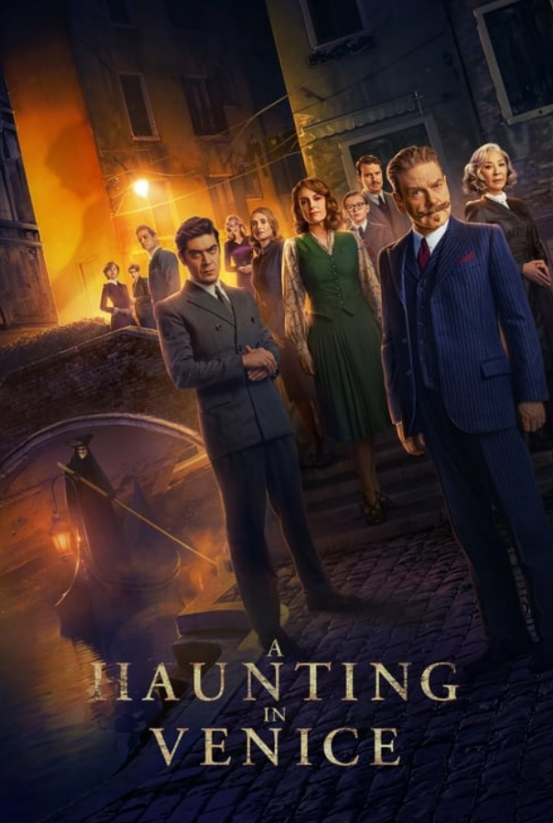After a long awaited year, the third movie in the epic Hercule Poirot mystery series is finally in theaters.
“A Haunting in Venice”, a movie adaptation of “Hallowe’en Party” by Agatha Christie, features detective Hercule Poirot, played by director Kenneth Branagh, coming out of retirement to solve a ghost-related mystery.
The cinematography and adventurous plotline, coupled with the emotional journey the film takes you through, establishes this movie as the best in the Hercule Poirot Film series.
The start of the film takes you through Poirot’s internal conflicts as a detective. Despite once being esteemed and highly talented, Poirot refuses to take cases and falls into retirement.
Although he is content, this feeling is challenged by his writer friend, Ariadne Oliver played by Tina Fey, who pushes him to solve another murder because she believes he is not fulfilling his true desires.
I think this was a beautiful and complex way to show an emotional and mental block Poirot experiences. This gives more depth to him, and successfully demonstrates how Poirot struggles with balancing the trauma he has developed from past cases combined with the joy he feels when they are solved.
Oliver takes Poirot to a Halloween party at which the host, Rowena Drake played by Kelly Reilly, hires a medium, Mrs. Reynolds, played by Sandra Oh, to find her daughter’s cause of death.
This gave rise to a compelling dynamic between Poirot and Mrs. Reynolds, as both of them argued over using logic versus using ghosts as an explanation for her daughter’s (Alicia, played by Rowan Robinson) death. This also pushes Poirot to take matters into his own hands and solve the mystery.
As the story goes on, it follows a typical Agatha Christie plot line by showing multiple characters murdered, and Poirot interrogating every character to see if they are the killer.
This aspect of the movie was predictable, as the previous two movies’ endings were similar; it caused the twist at the end (Rowena being the killer) to fall flat.
Regardless, it was still effective at revealing the true nature of each character, and evoking a range of emotions from the audience.
Throughout the movie, Oliver was staging paranormal events in order to provide inspiration for her new novel, in turn exploiting Poirot.
I believed it was this moment that made the audience shift suspicion to Oliver as the killer, and it made certain clues unreliable, adding more confusion.
Additionally, by the end of the movie it is also revealed that Rowena’s son, Leopold Ferrier played by Jude Hill, was aware of his own mother being the murderer.
This added an emotional layer to the film as Leopold had to carry the burden of knowing the truth about his own mother and also live with the death of his sister and eventually his father.
Finally, after solving the case, Poirot returns to his life as a detective.
This was a satisfying ending to the movie. It gave peace of mind knowing Poirot regained his passion and was able to overcome his mental block. It also provided a good opening to continue the Hercule Poirot Film series.
The movie’s haunted concept as a whole was well executed; it had good jump scares and weaved in paranormal activities.

This concept was emphasized by the masterfully planned lighting, the dreary atmosphere, and the amazingly executed cinematography. Each scene was shot in impeccable quality, and made it feel as if I was really there experiencing the events. This contributed to making this movie my favorite so far of the series.
Overall, if you are someone who enjoys a good mystery, or simply just wants to get into the Halloween mood, “A Haunting in Venice” is the perfect action-filled murder mystery to watch.







